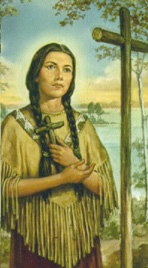We ask you, urgently: don't scroll past this
Dear readers, Catholic Online was de-platformed by Shopify for our pro-life beliefs. They shut down our Catholic Online, Catholic Online School, Prayer Candles, and Catholic Online Learning Resources essential faith tools serving over 1.4 million students and millions of families worldwide. Our founders, now in their 70's, just gave their entire life savings to protect this mission. But fewer than 2% of readers donate. If everyone gave just $5, the cost of a coffee, we could rebuild stronger and keep Catholic education free for all. Stand with us in faith. Thank you.Help Now >
Sir George Bowyer
FREE Catholic Classes
Baronet, an eminent English writer on jurisprudence, as well as a prominent defender of the Holy See and of Catholic interests in general, both by voice and pen, was born at Radley House, in Berkshire, 8 October, 1811; d. in London, 7 June, 1883. His family, traceable much farther back, settled, early in the seventeenth century, at Denham Court, Buckinghamshire, and in 1660 the head of the house was made a baronet. His grandfather was a naval officer of high distinction who took part in Howe's famous victory off Ushant, 1 June, 1794. George Bowyer was at first intended for the army, and so for a while he was a cadet at Woolwich. His bent, however, was towards the law ; accordingly, in 1836, he was admitted a student at the Middle Temple, his call to the English Bar regularly ensuing in 1839. Five days after his call to the Bar, partly, perhaps, because of two learned works published by him in the foregoing year, and partly, perhaps, by reason of his family's neighbourhood at Radley, the University of Oxford created him an honorary M.A., Mr. Bowyer forthwith began practice as an equity draughtsman and conveyancer, without ceasing to devote himself to congenial literary work. In 1841 he published "The English Constitution, a Popular Commentary on the Constitutional Laws of England", which in 1844 was followed by "Commentaries of the Civil Law ". So valuable were these works that at midsummer of the latter year the University of Oxford bestowed on him the highest honour in its gift by creating him a D.C.L. In 1849 he endeavoured to get into Parliament as a representative of Reading Borough in his native Berkshire, but his hour of parliamentary life was not yet.
Next year, 1850, there happened the gravest and most far-reaching event in Bowyer's career: his conversion from Anglican Protestantism to the Catholic religion. That same year Pope Pius IX set up in England a new Catholic episcopal hierarchy . At this proceeding, vulgarly styled "the Papal Aggression", English Protestantism went wild with rage and resentment for the space of several months. To Bowyer this popular mania offered a golden opportunity to stand forth boldly in the Holy Father's defence. His pamphlet, "The Cardinal Arch-bishop of Westminster and the New Hierarchy", ran through four editions and was followed at intervals by several more publications on the same theme. From this beginning to the end of his days he was the foremost lay champion in England of the Catholic Church and her early head. His letters addressed to the newspapers, principally to the "Times", were many, vigorous and unanswerable and in those days he was practically the only competent Catholic whose controversial lettters were admitted into the English Protestant press. At the same time he zealously prosecuted his legal studies and writings. His "Commentaries on the Universal Public Law" came out in 1854 and is commonly considered his greatest literary achievement; "Introduction to the Study and Use of the Civil Law ", his last publication, appeared in 1874.
To go back to 1850, period of his conversion, Mr. Bowyer was that year appointed Reader in Law at the Middle Temple. In 1852 he at last found his desired seat in Parliament, as member of the Irish borough of Dundalk, whose representative he continued to be for the next sixteen years. During that stirring period there came the Italian Unity movement and the despoiling of the Roman Pontiff of the greater part of his temporal dominions, to be followed some years later by the seizure of the remainder. Then it was that Sir Geoge Bowyer (who, on the death of his father, in 1860 had succeeded to baronetcy), in company with John Pope Hennessy, John Francis Maguire, and others took every occasion to denounce in Parliament the Italian revolutionaries, especially for the robbery and virtual captivity of the Roman Pontiff, the atrocities committed by King Victor Emmanuel's soldiery in the lately annexed Neapolitan realm. For all these misdeeds the member for Dundalk continually called to account Lord Palmerston, Lord John (afterwards Earl) Russel, Mr. Gladstone, and other English governmental abettors of the Italian Revolution, who could answer only by parading principles at once subversive and immoral. In 1868 he lost his seat for Dundalk, and for the next six years remained out of the Parliament, until 1874, when, as a Home Ruler, he was chosen a representative of the Irish County of Wexford, retaining that seat untiI 1880. Meanwhile, as his principles and attitude with regard to the Italian question, to say nothing of other matters, were nowise to the taste of the British Liberal party, he was, in 1876, turned out of the London Reform Club.
On the 7th of June, 1883, Sir George Bowyer was found dead in bed at his London chambers, No.13, King's Bench Walk, in the Temple. His obsequies took place in the Catholic church of St. John of Jerusalem, which, alongside of the Hospital ot Sts. John and Elizabeth, in Great Ormond Street, he had built at his own cost. And here it may be remarked that in architecture Sir George Bowyer had a strong leaning for the Palladian, or Italian, style, as against the Gothic, especially for public buildings, and his principles he put into practice in the aforesaid church, which is a little Palladian gem. The church has now been removed bodily to St John's Wood, there to serve transferred and new-built hospital. Sir George Bowyer was a Knight Commander of the Order of Pius IX, and a Papal Chamberlain; Knight Grand Cross of the Order of St. Gregory the Great, Knight of Justice of the Sovereign Order of St. John of Jerusalem (or of Malta) , etc. At home he was a Justice of the Peace and Deputy Lieutenant of Berkshire. He never married, and was succeeded in the baronetcy by his young brother.
Join the Movement
When you sign up below, you don't just join an email list - you're joining an entire movement for Free world class Catholic education.
-

- Easter / Lent
- Ascension Day
- 7 Morning Prayers
- Mysteries of the Rosary
- Litany of the Bl. Virgin Mary
- Popular Saints
- Popular Prayers
- Female Saints
- Saint Feast Days by Month
- Stations of the Cross
- St. Francis of Assisi
- St. Michael the Archangel
- The Apostles' Creed
- Unfailing Prayer to St. Anthony
- Pray the Rosary
Saint Kateri Tekakwitha: First Native American Saint and Model of Holiness
Marian Festival in Flores Unites Muslims and Christians in Remarkable Witness of Faith and Solidarity
Catholic Online AI Open Letter
Daily Catholic
 Daily Readings for Tuesday, July 15, 2025
Daily Readings for Tuesday, July 15, 2025 St. Bonaventure: Saint of the Day for Tuesday, July 15, 2025
St. Bonaventure: Saint of the Day for Tuesday, July 15, 2025 Act of Charity: Prayer of the Day for Tuesday, July 15, 2025
Act of Charity: Prayer of the Day for Tuesday, July 15, 2025 Daily Readings for Monday, July 14, 2025
Daily Readings for Monday, July 14, 2025 St. Kateri Tekakwitha: Saint of the Day for Monday, July 14, 2025
St. Kateri Tekakwitha: Saint of the Day for Monday, July 14, 2025- St. Michael, For Personal Protection: Prayer of the Day for Monday, July 14, 2025
![]()
Copyright 2025 Catholic Online. All materials contained on this site, whether written, audible or visual are the exclusive property of Catholic Online and are protected under U.S. and International copyright laws, © Copyright 2025 Catholic Online. Any unauthorized use, without prior written consent of Catholic Online is strictly forbidden and prohibited.
Catholic Online is a Project of Your Catholic Voice Foundation, a Not-for-Profit Corporation. Your Catholic Voice Foundation has been granted a recognition of tax exemption under Section 501(c)(3) of the Internal Revenue Code. Federal Tax Identification Number: 81-0596847. Your gift is tax-deductible as allowed by law.



 Daily Readings for Tuesday, July 15, 2025
Daily Readings for Tuesday, July 15, 2025 St. Bonaventure: Saint of the Day for Tuesday, July 15, 2025
St. Bonaventure: Saint of the Day for Tuesday, July 15, 2025 Act of Charity: Prayer of the Day for Tuesday, July 15, 2025
Act of Charity: Prayer of the Day for Tuesday, July 15, 2025 St. Kateri Tekakwitha: Saint of the Day for Monday, July 14, 2025
St. Kateri Tekakwitha: Saint of the Day for Monday, July 14, 2025

